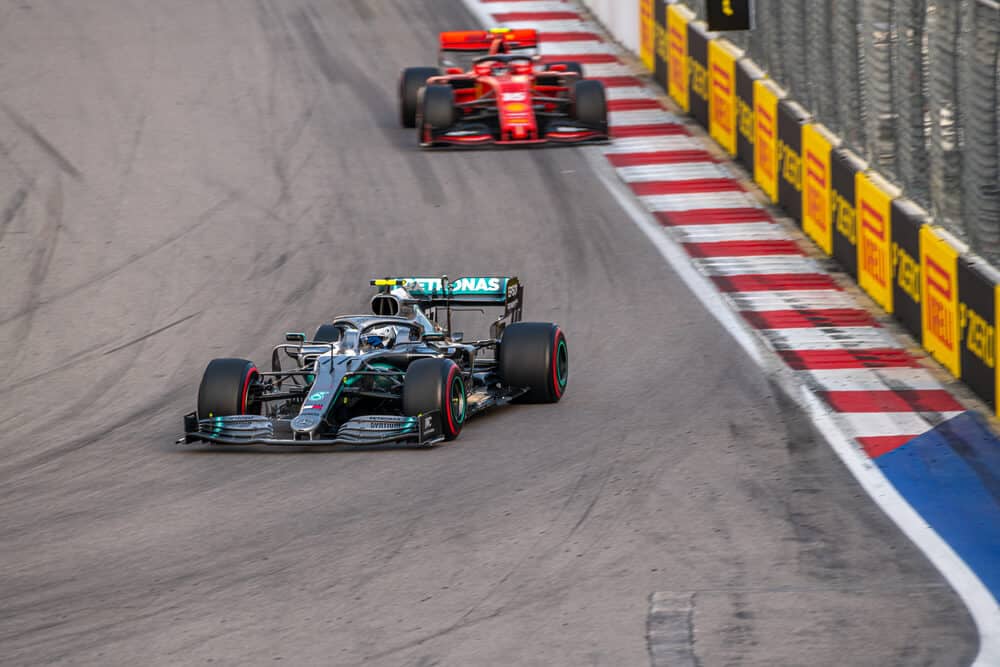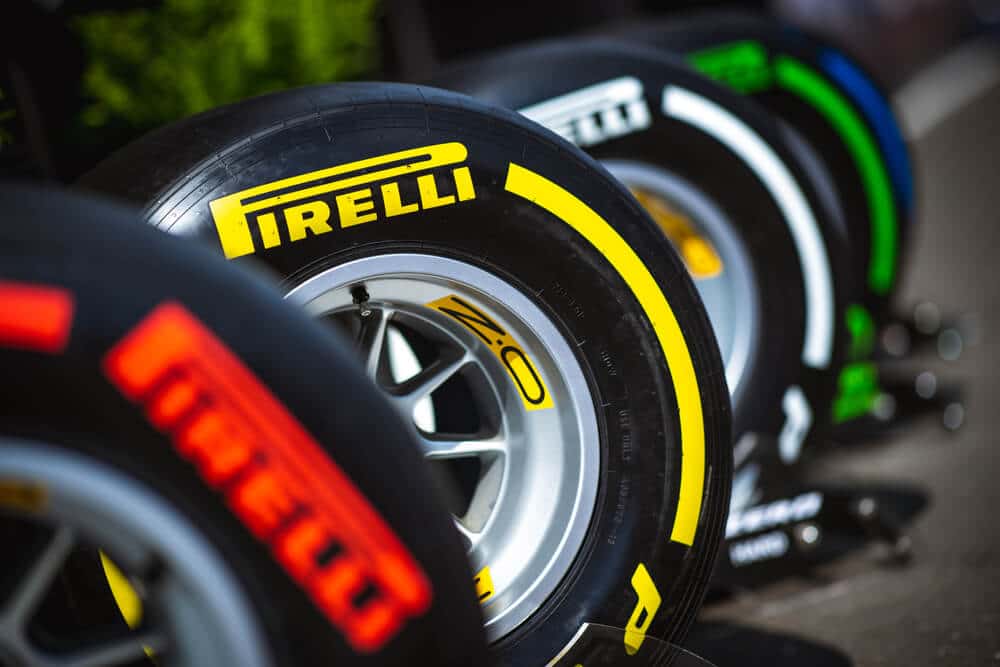It’s easy for someone unfamiliar with the Formula One (F1) industry to be overwhelmed by all the jargon they hear. New fans are sometimes confused by the constant use of jargon like “undercut” and “overcut” during Grand Prix events.
The Undercut is one of the most often utilized methods in Formula One and will be discussed in this article with the overcut, another common technique.
Table of Contents
Watch this video to learn more about undercut vs overcut.
What is an Undercut in F1?
An undercut in F1 is a strategy where a driver pits for new tires before their rivals, allowing them to exit the pit lane with fresher tires and potentially faster lap times. This can be used to gain track position and pass other drivers.
Key takeaways
- This guarantees the driver has newer tires than his competitor, giving him an advantage in the race. The lap timings improve, and once he comes within a second of the car in front of him, he may use the DRS (Drag Reduction System) to make a pass.
- Naturally, the other team will respond by making a pit stop when this happens. The other driver would likely try to get a new set of tires to close the distance, but if the margin is too large, he may find himself in second place behind the undercutting driver. It’s a risky move, but the payoff for successful execution is high: the driver may gain valuable places on the track.
- However, there are issues with the Undercut in F1. The undercutting driver loses ground in terms of having newer tires since he stops before his rival. This might cause the late-stopping driver to gradually lose speed and grip relative to the competition, allowing the latter to compensate for lost ground.
- If your opponent is sharp, undercutting may even backfire on you. In races, when undercutting is used, the driver that pits first will have more worn tires. This may cause you to slow down and lose control of the situation as it pertains to your opponent. This provides the latter with a chance to get back on track.
- Every single plot point revolves around where the train is positioned. Gaining an advantage in track position over your opponent allows you to focus on using your skills and mental edge throughout the race. Late in the race, though, “worn out” tires might be a handicap.

Understanding Undercut
Every team enters each Grand Prix with a game plan for how they want to finish the race. The track conditions, the weather, and the caliber of the competition will all play a role in determining the strategy. Before the start of the race, racing plans are discussed. Each team member is given access to sensitive information when formulating a strategy. On the other hand, race strategies are not permanently fixed in stone. During the race, the driver will choose whether or not to undercut.
A strategy for winning a team race involves methods to outwit the competitor. One of the strategies that may be used to get an edge over one’s rival is the Undercut. The plan’s success will depend on how the Undercut is executed as well as the time of its implementation. The driver, the team management, and the team engineers have the ultimate word in determining whether the driver is required to undercut.
When to use the Undercut effectively is a crucial factor to consider. A driver must begin their pit stop early to undercut 1 or 2 laps before the others are expected to pit. If he accomplishes this, he will benefit from racing in clean air while the other drivers are pitting their cars. If the air is clean, there will be less resistance for the automobile to overcome, which will assist the driver in creating a larger lead over their competitor while also protecting their tires.
Does undercutting always work?
The undercutting strategy is only effective when it is timed and properly executed. The undercutting driver’s racing strategy can fail if the competitor can predict and understand the driver’s game plan and respond appropriately. The driver that came into the pits later will have more recent tires as the race nears its finale. The driver that undercuts another driver will give the advantage gained to the driver who comes into the pits later.
An experienced opponent familiar with the undercut tactic will calculate how many further laps he can go before entering the pits. After that, he will try to stay in the slipstream of the driver who undercut him for as long as he can if he has gained the lead to protect his tires.
When it comes down to the wire, the competitor still has a few laps left on tires that aren’t completely worn out. These tires, which are not as old as the ones on the vehicle undercutting the competition, help the competitor regain the lead. The Undercut is only used after carefully assessing the potential benefits of using it against the dangers associated with doing so. Consequently, the choice to undercut is not made until the middle of the competition.
An experienced opponent familiar with the undercut tactic will calculate how many further laps he can go before entering the pits. After that, he will try to stay in the slipstream of the driver who undercut him for as long as he can if he has gained the lead to protect his tires.
The difference between undercut and overcut
In Formula One, there is also a method known as the overcut, which functions similarly to the Undercut but is used less often than the Undercut. The overcut in Formula 1 is the opposite of the Undercut in every possible way. When the driver in front of them pits, the driver remains on the track. After that, he receives an advantage from the fresh air that travels over and through his automobile, which helps the vehicle’s performance.
The driver in issue has overtaken his rival when he emerges from the pits in front of his competitor. The driver has the advantage of a clean track and the ability to put as much pressure as he wants on his tires since he will soon be pulling into the pits to get new ones.
When the Safety Car comes out on the track, and the driver of the overcutting vehicle can make it into the pits before they shut, overcuts may also be helpful to that driver. Since the cars would be crowded together, it would be practically effortless for him to get a good track position. Read more about the difference between overcut and undercut in Formula 1.
Important factors for success
Controlling the car, being aware of the environment, having a race craft, being competent in engineering, and having patience, balance, discipline, and marketing are all necessary abilities for a racing driver.
In the Grand Prix of France in 2021, Max Verstappen debuted the Undercut for the first time. Although he had to put in a lot of effort to win the race eventually, it enabled him and Red Bull to dictate the strategy for the race. He used it well once again against Lewis Hamilton in the US Grand Prix, who was his opponent. Red Bull and Max Verstappen were under pressure when Verstappen won the race despite his tires being in poor condition.
In response, Mercedes and Lewis Hamilton took a page out of a playbook by Max Verstappen at the Qatar Grand Prix in 2021. The Mercedes team decided to sub for Lewis Hamilton early in the competition. Lewis Hamilton established an unassailable advantage as a direct consequence of the Undercut, and he went on to win the Grand Prix.
Frequently asked questions about Double-stack pit stops
Does undercutting in F1 always work?
Is undercut or overcut best in Formula One?
Is overcut the most common pit stop strategy in Formula 1?
Conclusion
Undercutting is common when racing against other teams’ drivers or your own. Everything depends on the tactics and approach that the team takes throughout the race.
For instance, Mercedes adheres to the concept that its drivers, Lewis Hamilton and Valtteri Bottas, should be allowed to compete against each other in races. Because of this, the racing engineers of each competing team can apply to undercut anytime they deem it necessary.
Article sources
Learn more about Formula One
Want to learn more about F1? Then visit our Formula 1 glossary and dictionary.



